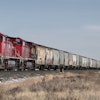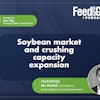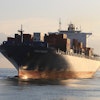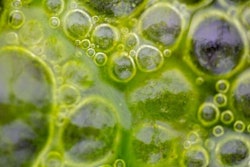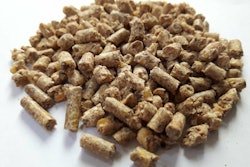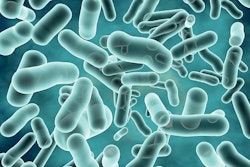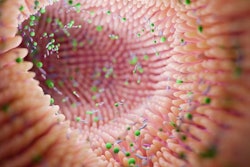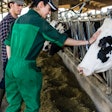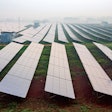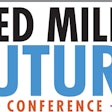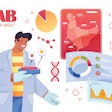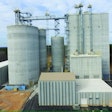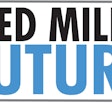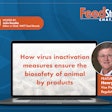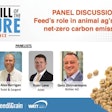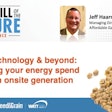Beta Bug’s Graeme Dear provides an insect farming outlook, offering his thoughts on when insect proteins will become a widely available protein alternative
In the past few years, the potential of insect proteins in animal feed has generated a lot of buzz, but when will this novel protein truly come online as aalternative to fish mealand other commonly used feedstuffs?
Beta Bug‘s non-executive director Graeme Dear joins the Chat to discussinsect protein’s potentialand when he thinks the insect-derived product industry will reach its full scale to become a widely available, cost-effective feed ingredient.
Insect-derived feedstuffs deliver high-quality protein, environmental gainsfromWATT Global MediaonVimeo.
TRANSCRIPT: Feed Strategy Chat featuring Graeme Dear, Beta Bugs Ltd.’s non-executive director
Jackie Roembke, editor in chief, WATT Feed brands/Feed Strategy:Hello everyone and welcome to Feed Strategy Chat. I am your host, Jackie Roembke, editor in chief of WATT Feed brands and Feed Strategy magazine.
This edition of Feed Strategy Chat is brought to you by WATT Global Media and FeedStrategy.com. FeedStrategy.com is your source for the latest news and leading-edge analysis of the global animal feed industry.
Today we’re joined on Zoom by Graeme Dear, non-executive director ofBeta Bugs, a U.K.-based insect genetics company developing and distributing breeds of black soldier flies. He is here to give an overview of the insect farming industry and delve into the use of insects in feed and its potential environmental benefits.
Hi, Graeme, how are you today?
Dear:I’m fine. Jackie, how are you? Nice to see you.
Roembke:Yeah, nice to see you, too. I’m doing well. Thank you. Well, let’s get right into it.Please provide a brief overview of the current state of the insect ingredient market.
Dear:Yeah. For me, the first thing you need to know about me is I’m an absolute realist. And so I look at things as they are, and the industry is in its infancy.
I’ve been involved in a number of industries in my career that have started from nothing and developed into some major industries — and I think that’s where we are, really, with insect farming. We’re right at the beginning. And I know there are some players out there that are producing tons here, a few tons there, but for us to develop as an industry and be a meaningful supplier of the raw material market, the biggest thing that’s got to happen, for me, is scale up. And we’ve got to get to some meaningful volumes.
So right across the globe, it’s really in its infancy, it’s starting off, but it’s very, very exciting.
Roembke:Excellent, thank you so much for that take.Tell me a little bit about insect propagation and how advances in this area have helped develop insect farming for use in animal feeds.
Dear:嗯,我发现最令人兴奋的一件事coming into a new industry is you have to invent everything. You have to manipulate, take an idea, or we got a problem, we need a solution to that problem, and you create your solution. And what you see across the globe? Lots and lots of companies building their own little ideas to deal with particular problems.
What I find quite exciting now is that we’re really starting to see some of the big manufacturers of animal husbandry systems getting involved in insect farming, starting to apply the knowledge and engineering expertise that they’ve gotten in other sectors and bringing it into insects.
So there’ll be a lot of changes over the next few years, I expect to see. Again, it’s in many instances as an infancy, but it will develop quite quickly. And when these big players come in and bring everything that they can bring to bear, then I expect to see some major advances in the next few years.
Graeme Dear will present his talk,“How insects in animal diets will shape the protein landscape,”at the2022 VIV LIVE Feed Congresson May 30. Register today:https://bit.ly/3v36JxO
Roembke: What is the timeline? Is it 10 years? Five years? 20 years? What do you think?
Dear:I, again, I come back to being a realist. There’s a lot of hype. Let’s be honest. There’s a lot of hype around insect farming. And you have to be careful, you have to sort the wheat from the chaff. And for me, it’s a 10-year program to be able to get to a point where we have meaningful volumes coming through, being bought by animal feed companies, fish feed companies that are starting to formulate them in on a regular basis.
There’s very little to gain from a feed formulator if one day he’s got some insect protein, and the next day he doesn’t. So we need to see that stability, that growth in the market, and I think the sort of initiatives that we’re seeing in chats like this, they’re the sort of things that will help to catalyze and get people involved that really got a lot to bring to the party.
Roembke:Very good. Well, that sounds extremely exciting. And now I know there’s a lot of research out there too.How can insect-derived feedstuffs benefit poultry and livestock production?
Dear:Well, probably the most challenging period for raw materials for animal feed and fish feed that we’re going through now — all for the wrong reasons. What’s going on in Ukraine and Russia and the impact that that’s having has brought to bear into the marketplace, or across a number of people that I work with, just how challenging it’s going to be. I know an ex-colleague from the aquaculture sector is talking about doubling in fish feed prices.
So that will start to create an opportunity because one of the one of the biggest challenges for insect protein is for it to be competitive so that it is routinely used. And just now it’s not as competitive as it needs to be.
It will scale. So again, I come back to scale that will bring the cost down, but as the other the cost of these other raw materials increase, that will start to create opportunity.
I think over the next 10 years, insect protein will be very much part and parcel of the poultry feed sector and the fish feed sector.
When I said that there’s a bit of hype, again, I’m quite realistic in it — it’s a protein source, or what are we going to bring to the party with insect protein is a pile of amino acids. And it won’t necessarily be a replacement for fish meal, it won’t necessarily be a replacement for soya or wheat, it’ll be part and parcel of the package. But again, you need to have consistent supply, consistent quality and good volumes for that to happen.
Roembke:Very good. So sustainability, a very hot topic. And, you know, or at least a buzzword that we’re seeing everywhere about everything. But to make the connection between what we’re talking about here and feed production,how may it impact agrifood’s overall environmental footprint long term?
Dear:Well, it ticks a lot of boxes. And without giving away what I’m going to say in my presentation, one of the lines that I’ll be using is a lot of people say we can’t afford to use insect protein, insect meal, because it’s too expensive. Well, my answer to that is: We can’t afford not to use it going forward.
It doesn’t make any sense to me at all that we’ve got a potential useful product that we can generate from a waste product, turning it into something beneficial, that’s going to be good for the whole sustainability argument.
That will help while it’s sort of niche volumes, smaller volumes that will help to sell it because there will people that will quite rightly buy into that whole sustainability argument, and insect protein can be part and parcel of that solution.
Longer term, it will have a major impact. Because there’s no point we can no longer afford to throw things away. We’ve got to use everything that we can to generate as much animal feed as we can to save a few trees.
Roembke:Okay, good. And thank you for mentioning your presentation because that helps segue into my outro here. If you’d like to hear more from Graeme, and you’ll be in Utrecht for VIV Europe, please consider joining us on May 30 for theEuropean LIVE Feed Congress, held the day before the VIV Europe. Here, Graeme will talk about how insects and animal diets will shape the protein landscape.
For more information on that, please visitwww.feedstratgy.com/events. Thank you so much, Graeme, and thanks to you for tuning in.
Dear:Thanks, Jackie.


